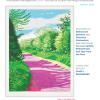
Note From the Editor: April 2023
 brought to you by
brought to you by  Wealth Planning>Estate Planning Note From the Editor: April 2023 Editor in Chief Susan R. Lipp discusses this month's issue. Resources
Wealth Planning>Estate Planning Note From the Editor: April 2023 Editor in Chief Susan R. Lipp discusses this month's issue. Resources  Trusts & Estates Latest Issue Read the Latest Issue
Trusts & Estates Latest Issue Read the Latest Issue  Trusts and Estates Digital Edition Archive Trusts & Estates Digital Edition Archive
Trusts and Estates Digital Edition Archive Trusts & Estates Digital Edition Archive  Subscribe to Trusts & Estates Premium Content Subscribe to Trusts & Estates Premium Content
Subscribe to Trusts & Estates Premium Content Subscribe to Trusts & Estates Premium Content Acceptance of electronic signatures on documents, including those used for estate planning, has been growing for a while. Back in July 2019, the Uniform Law Commission (ULC) approved the Uniform Electronic Wills Act, which allows a will to be written in an electronic medium, electronically signed and electronically validated. During the pandemic, when many clients didn’t want to meet in person, some jurisdictions permitted the electronic signature of estate-planning documents. This trend has continued, and now the ULC has turned its attention to trust documents. As detailed in “New Uniform Law Permits Electronic Signatures on Estate Planning Documents,” p. 17, by Jennifer Smith, Michelle Hong and Riley MacGray, the Uniform Electronic Estate Planning Documents Act, approved in July 2022, permits the electronic execution of all trust-related documents and other non-testamentary estate-planning documents.
We’re also seeing some new trends when it comes to art as an asset class. For example, as illustrated in “Fractional Interests in Artwork,” p. 44, by Anne-Laure Allehaut, it’s now possible to purchase a fractionalized interest in art, including a fractional interest in a nonfungible token. In addition, an estate’s artwork may be located in different jurisdictions, resulting in practical issues that executors and fiduciaries need to plan for when administering such an estate. Those issues are discussed in “Navigating the Estate Administration of Art Collections” by Caryn Young, Sarah Verano, Davis Turner and Olivia Taylor, p. 54.
This month’s issue also contains our Insurance Committee Report, with articles on private placement life insurance, an update on long-term care options, the use of a grantor retained annuity trust to fund life insurance and a template for trustees to use to evaluate irrevocable life insurance trusts.
0 comments Hide comments Comment * Switch to plain text editor
Comment * Switch to plain text editorMore information about text formats
Text format CommentsPlain text Comments- Allowed HTML tags: <em> <strong> <blockquote> <br> <p>
- No HTML tags allowed.
- Web page addresses and e-mail addresses turn into links automatically.
- Lines and paragraphs break automatically.
Owl Media Group takes pride in providing social-first platforms which equally benefit and facilitate engagement between businesses and consumers and creating much-needed balance to make conducting business, easier, safer, faster and better. The vision behind every platform in the Owl Media suite is to make lives better and foster a healthy environment in which parties can conduct business efficiently. Facilitating free and fair business relationships is crucial for any thriving economy and Owl Media bridges the gap and open doors for transparent and successful transacting. No advertising funds influence the functionality of our media platforms because we value authenticity and never compromise on quality no matter how lucrative the offers from advertisers may seem.
Originally posted on: https://www.wealthmanagement.com/estate-planning/note-editor-april-2023